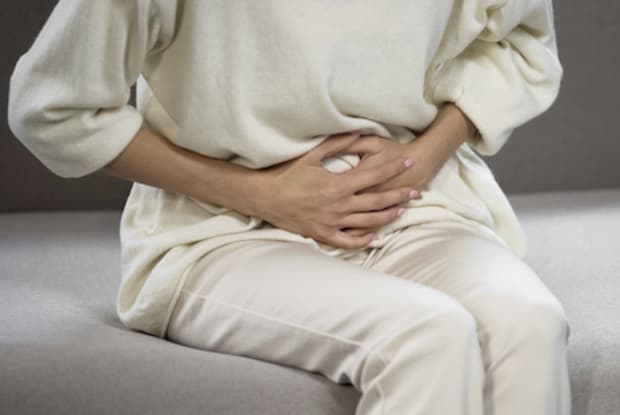Table of Contents
I. The Function of the Bladder
II. What is Overactive Bladder?
III. What is Benign Prostatic Hyperplasia?
IV. What is Interstitial Cystitis?
a. Symptoms of Interstitial Cystitis
V. Diagnosing Bladder Problems
VI. Complications of Bladder Problems
The Function of the Bladder
The urinary system is an essential part of the body’s processes. When the body takes nutrients from the foods and liquids we consume, it converts them into energy and leaves the waste products. These waste products are called urea, which travels through the kidney and urinary system. Urea occurs when vegetables, poultry, meat, and other proteins break down in the body and are then removed through the urine. [1]
Urine is stored in the bladder, which is a muscular sac in the pelvis. The bladder can stretch and accommodate urine, but it is about the size of a pear when it is empty. When the bladder is working properly, it allows urination to be infrequent and controlled. It can hold urine for periods due to the layers of muscle that line the bladder. When a person needs to urinate, the bladder muscles squeeze, sphincter valves open, and urine flows out. The urine then travels through the urethra and is taken out of the body.
Many people don't give much thought to the bladder's process until it starts to malfunction. The urinary system is made up of many complicated structures, and several conditions may occur if one part of the process is disrupted. Many bladder conditions occur as the body ages, most commonly benign prostatic hyperplasia, overactive bladder, and interstitial cystitis.
These conditions can begin to interfere with everyday life if they are not treated with medications like Toviaz (fesoterodine fumarate), Myrbetriq (mirabegron), Vesicare (solifenacin), Avodart (dutasteride), and Elmiron (pentosan polysulfate sodium). Read on to learn more about the symptoms of these urinary problems. [2]
Overactive bladder, also known as OAB, affects over 33 million Americans. Women are typically more affected than men. OAB can be embarrassing and may lead people to isolate and limit their social life. In a normally functioning bladder, nerve signals are sent to the brain when the bladder is full and relaxes the pelvic floor and urethra muscles. The muscles of the bladder contract and push the urine out. [3] If you have an overactive bladder, the bladder muscles contract involuntarily, even if the bladder is not full. This makes it feel like you constantly have to use the restroom, disrupting your everyday routines. Women are more likely to experience this condition because of estrogen changes and childbirth. Around 40 percent of women in the United States experience symptoms of OAB. The exact causes of this condition are unknown, but a lack of estrogen caused by menopause can lead to OAB symptoms. Having children can also exert pressure on the bladder and weaken the pelvic floor muscles. [3] OAB is more common in women, but it can occur to anyone. Overactive bladder is not a normal part of aging, and a doctor should be consulted if you feel like you constantly need to urinate. Talk to your doctor if you experience the following symptoms: Benign prostatic hyperplasia, also known as BPH, is a common condition in older men. An enlarged prostate causes BPH. The prostate is a walnut-sized gland located between the bladder and penis. This organ is responsible for secreting fluid that nourishes and protects sperm. The urethra runs through the prostate from the bladder to the penis, and when the prostate swells, it can put pressure on the urethra. Almost every man over the age of 50 experiences some form of BPH. BPH's exact cause is not known, but normal hormonal changes as you age is thought to be one of the most common causes. When a boy is going through puberty, the prostate doubles in size. It also grows again around 25 years old, and the prostate continues to grow slightly throughout a man's life. For some men, this growth doesn't result in any symptoms, but BPH occurs for others. Contrary to popular belief, BPH does not increase your risk of prostate cancer. [5] A growing prostate may cause symptoms slowly over time. Many men may think this is a normal sign of aging, but it is not, and you should seek your primary care physician's help. When an enlarged prostate pinches the urethra, several symptoms can occur. Symptoms may include: This bladder condition results in bladder pressure, bladder pain, and pelvic pain. Interstitial cystitis is part of several disorders under the umbrella of painful bladder syndrome. Cystitis causes the frequent urge to urinate and most often affects women. Having a previous chronic pain disorder makes it more likely for you to experience interstitial cystitis. Cystitis is a chronic condition and may have periods of remission when no symptoms are present. It is often mistaken for urinary tract infections, but no infection is present in the case of interstitial cystitis. [6] These infections are common bladder conditions that occur when bacteria get trapped in the urinary tract and multiply in the bladder. [7] There are several triggers of this condition, including menstruation, sitting for too long, stress, sexual activity, and certain exercises. Common symptoms of this disorder include: Your risk factors and previous health conditions will help determine the root cause of your bladder problems. Of course, only men can experience BPH, but men may have OAB without the presence of BPH. The doctor will ask about your symptoms and likely perform a physical exam. Common tests for bladder problems can include: Urine tests: You will likely have to give a urine test to determine OAB or BPH. The urine test will be analyzed to rule out infections, like a urinary tract infection or other disorders with similar symptoms. [8] Blood tests: Blood tests can also help determine the presence of kidney problems. A prostate-specific antigen (PSA), a substance produced in the prostate, can also be determined in a blood test. PSA levels are higher in those with prostate problems. Physical exam: In men, a digital rectal exam will likely be performed. This involves the doctor inserting a finger into the rectum to check for prostate enlargement. In women, a pelvic exam will be performed. [6] Emotional side effects: Using the restroom several times a day can significantly affect your mental health. It is disruptive to your everyday life, causing emotional distress, anxiety, sleep disturbances, and sexuality issues. Stress incontinence: Many women with OAB may have mixed incontinence, OAB combined with stress incontinence. Stress incontinence is the unintentional loss of urine caused by pressure on the bladder, like coughing, sneezing, laughing, or exercising. This usually occurs during or after pregnancy. [4] Bladder damage: Over time, the bladder will weaken, and the bladder will not contract properly. Bladder stones may also occur, causing infection, bladder irritation, and blood in the urine. [6] Luckily, the majority of bladder conditions are treatable. If your doctor decides that you are experiencing bladder issues, they may encourage lifestyle changes and exercises to improve the strength of the bladder. Initially, your doctor may recommend pelvic floor muscle exercises, also known as Kegels. A doctor or physical therapist will help teach you how to perform these exercises at home to strengthen the pelvic floor muscles and urinary sphincter. Bladder training is also helpful if your bladder problems are mild. You can teach yourself to delay restroom trips and work your way up to urinating every three or four hours. This may seem difficult at first, but it will tighten your pelvic floor muscles. [4] If these exercises are not beneficial to your condition, you may be prescribed Toviaz (fesoterodine fumarate), Myrbetriq (mirabegron), or Vesicare (solifenacin) for overactive bladder. These drugs help reduce muscle spasms and relax the bladder, allowing control of urination. [9] Avodart (dutasteride) helps men with BPH by improving urinary flow, which reduces the need for surgery later on. Interstitial cystitis is quite painful, and Elmiron (pentosan polysulfate sodium) can reduce bladder pain by restoring the damaged bladder wall. Your doctor will determine the right medication for your bladder condition.[10] The content in this article is intended for informational purposes only. This website does not provide medical advice. In all circumstances, you should always seek the advice of your physician and/or other qualified health professionals(s) for drug, medical condition, or treatment advice. The content provided on this website is not a substitute for professional medical advice, diagnosis, or treatment.
What is Overactive Bladder?
a. Symptoms of OAB

What is Benign Prostatic Hyperplasia?
a. Symptoms of BPH
What is Interstitial Cystitis?
a. Symptoms of Interstitial Cystitis
Diagnosing Bladder Problems
Complications of Bladder Problems

Treatment Options
